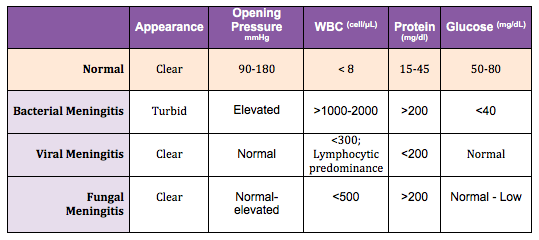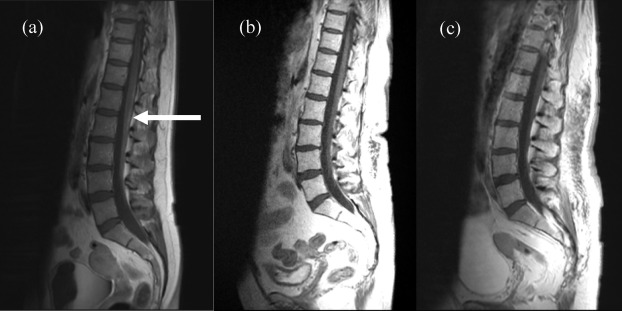[1]
May RC, Stone NR, Wiesner DL, Bicanic T, Nielsen K. Cryptococcus: from environmental saprophyte to global pathogen. Nature reviews. Microbiology. 2016 Feb:14(2):106-17. doi: 10.1038/nrmicro.2015.6. Epub 2015 Dec 21
[PubMed PMID: 26685750]
[2]
Pappas PG. Cryptococcal infections in non-HIV-infected patients. Transactions of the American Clinical and Climatological Association. 2013:124():61-79
[PubMed PMID: 23874010]
[3]
Takahara DT, Lazéra Mdos S, Wanke B, Trilles L, Dutra V, Paula DA, Nakazato L, Anzai MC, Leite Júnior DP, Paula CR, Hahn RC. First report on Cryptococcus neoformans in pigeon excreta from public and residential locations in the metropolitan area of Cuiabá, State of Mato Grosso, Brazil. Revista do Instituto de Medicina Tropical de Sao Paulo. 2013 Nov-Dec:55(6):371-6. doi: 10.1590/S0036-46652013000600001. Epub
[PubMed PMID: 24213188]
[4]
Williamson PR, Jarvis JN, Panackal AA, Fisher MC, Molloy SF, Loyse A, Harrison TS. Cryptococcal meningitis: epidemiology, immunology, diagnosis and therapy. Nature reviews. Neurology. 2017 Jan:13(1):13-24. doi: 10.1038/nrneurol.2016.167. Epub 2016 Nov 25
[PubMed PMID: 27886201]
[5]
Rittershaus PC, Kechichian TB, Allegood JC, Merrill AH Jr, Hennig M, Luberto C, Del Poeta M. Glucosylceramide synthase is an essential regulator of pathogenicity of Cryptococcus neoformans. The Journal of clinical investigation. 2006 Jun:116(6):1651-9
[PubMed PMID: 16741577]
[6]
Schmidt S, Zimmermann SY, Tramsen L, Koehl U, Lehrnbecher T. Natural killer cells and antifungal host response. Clinical and vaccine immunology : CVI. 2013 Apr:20(4):452-8. doi: 10.1128/CVI.00606-12. Epub 2013 Jan 30
[PubMed PMID: 23365210]
[7]
Vu K,Tham R,Uhrig JP,Thompson GR 3rd,Na Pombejra S,Jamklang M,Bautos JM,Gelli A, Invasion of the central nervous system by Cryptococcus neoformans requires a secreted fungal metalloprotease. mBio. 2014 Jun 3
[PubMed PMID: 24895304]
[8]
Stie J, Fox D. Blood-brain barrier invasion by Cryptococcus neoformans is enhanced by functional interactions with plasmin. Microbiology (Reading, England). 2012 Jan:158(Pt 1):240-258. doi: 10.1099/mic.0.051524-0. Epub 2011 Oct 13
[PubMed PMID: 21998162]
[9]
Perfect JR, Bicanic T. Cryptococcosis diagnosis and treatment: What do we know now. Fungal genetics and biology : FG & B. 2015 May:78():49-54. doi: 10.1016/j.fgb.2014.10.003. Epub 2014 Oct 13
[PubMed PMID: 25312862]
[10]
Nyazika TK, Hagen F, Meis JF, Robertson VJ. Cryptococcus tetragattii as a major cause of cryptococcal meningitis among HIV-infected individuals in Harare, Zimbabwe. The Journal of infection. 2016 Jun:72(6):745-752. doi: 10.1016/j.jinf.2016.02.018. Epub 2016 Mar 30
[PubMed PMID: 27038502]
[11]
Abassi M,Boulware DR,Rhein J, Cryptococcal Meningitis: Diagnosis and Management Update. Current tropical medicine reports. 2015 Jun 1
[PubMed PMID: 26279970]
[12]
Perfect JR, Dismukes WE, Dromer F, Goldman DL, Graybill JR, Hamill RJ, Harrison TS, Larsen RA, Lortholary O, Nguyen MH, Pappas PG, Powderly WG, Singh N, Sobel JD, Sorrell TC. Clinical practice guidelines for the management of cryptococcal disease: 2010 update by the infectious diseases society of america. Clinical infectious diseases : an official publication of the Infectious Diseases Society of America. 2010 Feb 1:50(3):291-322. doi: 10.1086/649858. Epub
[PubMed PMID: 20047480]
Level 1 (high-level) evidence
[13]
Day JN, Chau TTH, Wolbers M, Mai PP, Dung NT, Mai NH, Phu NH, Nghia HD, Phong ND, Thai CQ, Thai LH, Chuong LV, Sinh DX, Duong VA, Hoang TN, Diep PT, Campbell JI, Sieu TPM, Baker SG, Chau NVV, Hien TT, Lalloo DG, Farrar JJ. Combination antifungal therapy for cryptococcal meningitis. The New England journal of medicine. 2013 Apr 4:368(14):1291-1302. doi: 10.1056/NEJMoa1110404. Epub
[PubMed PMID: 23550668]
[14]
Campitelli M, Zeineddine N, Samaha G, Maslak S. Combination Antifungal Therapy: A Review of Current Data. Journal of clinical medicine research. 2017 Jun:9(6):451-456. doi: 10.14740/jocmr2992w. Epub 2017 Apr 26
[PubMed PMID: 28496543]
[15]
Merry M, Boulware DR. Cryptococcal Meningitis Treatment Strategies Affected by the Explosive Cost of Flucytosine in the United States: A Cost-effectiveness Analysis. Clinical infectious diseases : an official publication of the Infectious Diseases Society of America. 2016 Jun 15:62(12):1564-8. doi: 10.1093/cid/ciw151. Epub 2016 Mar 23
[PubMed PMID: 27009249]
[16]
Beardsley J, Wolbers M, Kibengo FM, Ggayi AB, Kamali A, Cuc NT, Binh TQ, Chau NV, Farrar J, Merson L, Phuong L, Thwaites G, Van Kinh N, Thuy PT, Chierakul W, Siriboon S, Thiansukhon E, Onsanit S, Supphamongkholchaikul W, Chan AK, Heyderman R, Mwinjiwa E, van Oosterhout JJ, Imran D, Basri H, Mayxay M, Dance D, Phimmasone P, Rattanavong S, Lalloo DG, Day JN, CryptoDex Investigators. Adjunctive Dexamethasone in HIV-Associated Cryptococcal Meningitis. The New England journal of medicine. 2016 Feb 11:374(6):542-54. doi: 10.1056/NEJMoa1509024. Epub
[PubMed PMID: 26863355]
[17]
Panackal AA, Wuest SC, Lin YC, Wu T, Zhang N, Kosa P, Komori M, Blake A, Browne SK, Rosen LB, Hagen F, Meis J, Levitz SM, Quezado M, Hammoud D, Bennett JE, Bielekova B, Williamson PR. Paradoxical Immune Responses in Non-HIV Cryptococcal Meningitis. PLoS pathogens. 2015 May:11(5):e1004884. doi: 10.1371/journal.ppat.1004884. Epub 2015 May 28
[PubMed PMID: 26020932]
[18]
Jitmuang A, Panackal AA, Williamson PR, Bennett JE, Dekker JP, Zelazny AM. Performance of the Cryptococcal Antigen Lateral Flow Assay in Non-HIV-Related Cryptococcosis. Journal of clinical microbiology. 2016 Feb:54(2):460-3. doi: 10.1128/JCM.02223-15. Epub 2015 Nov 25
[PubMed PMID: 26607986]
[19]
Vidal JE, Gerhardt J, Peixoto de Miranda EJ, Dauar RF, Oliveira Filho GS, Penalva de Oliveira AC, Boulware DR. Role of quantitative CSF microscopy to predict culture status and outcome in HIV-associated cryptococcal meningitis in a Brazilian cohort. Diagnostic microbiology and infectious disease. 2012 May:73(1):68-73. doi: 10.1016/j.diagmicrobio.2012.01.014. Epub
[PubMed PMID: 22578940]



